Haolei Yuan*
School of Art, Pingdingshan Polytechnic College, Pingdingshan 467000, China
*Corresponding email: 160705131@stu.cuz.edu.cn
https://doi.org/10.71052/geb2025/ORTO3941
Abstract
The new situation of social and economic development in China today is increasingly demanding the ability of art and design, and the connotation of art and design education practice in colleges and universities has been extended and expanded. Since art and design in colleges and universities is a comprehensive discipline based on the collaboration of art, humanities and science and technology, it requires practitioners to have innovative and complex qualities. Nowadays, artificial intelligence has been involved in many disciplines, and artificial intelligence itself has a lot in common with art and design, while the field of education is also undergoing a profound innovation under the influence of artificial intelligence. In view of this, this paper takes the teaching practice of art and design in colleges and universities under the background of artificial intelligence as the research topic and analyzes the deep impact of artificial intelligence on the teaching practice of art and design from the paradigm level. It not only breaks the historical and progressive research on teaching practice, but also provides a new research perspective for the development of teaching practice, and thus promotes the deep integration of AI technology and college art education practice. This study integrates literature research method and case study method to investigate the impact of AI on various elements of art and design teaching practice in colleges and universities, and whether this impact will reach the paradigm level. The paradigm of art and design teaching practice and its migration are studied and analyzed, and a paradigm migration model from multimedia teaching practice to information teaching practice and finally to intelligent teaching practice is constructed, and typical application cases under the guidance of intelligent art and design teaching practice paradigm are detailed. This initiative can provide new ideas and reference implications for future intelligent teaching practice.
Keywords
Artificial intelligence, Universities, Art and design, Teaching practice, Paradigm shift
Introduction
The rapid development of artificial intelligence leads human beings to enter the intelligent era in advance, and a series of policy documents related to artificial intelligence education provide strategic support for the development and reform of the field of art design teaching practice in colleges and universities [1,2]. In the field of teaching practice, teaching practice can effectively link theory and practice [3], and in view of this, this paper takes the teaching practice of art design in colleges and universities in the context of artificial intelligence as the research topic. In addition, paradigms have epistemological and methodological dimensions, and the analysis from the paradigm level can provide a deep research perspective on the impact of AI on art and design teaching practice, in order to further promote the deep integration of AI technology and art and design teaching practice and realize the concept of education informatization 2.0.
Leading of the times
Artificial intelligence provides a lot of opportunities for the development of many fields, and its important role has attracted great attention at home and abroad, and many countries have formulated policies and plans to upgrade artificial intelligence into national strategies. The United States has promulgated the “Preparing for the Future of Artificial Intelligence” and the “National Strategic Plan for Artificial Intelligence Research and Development” [4,5]; the European Commission has formulated the SPARC Robotics Innovation Program; the British and German governments have formulated the “Modern Industrial Strategy” and the “Industry 4.0 Plan” [6]; the Korean government established AI Star Lab in 2015, and AI became one of the five key areas of national research [7]; the Japanese government planned the route of AI industrialization and deployed a super-intelligent society [8]. Our government has also intensively issued relevant plans, such as the Three-Year Action Plan for Promoting the Development of a New Generation of AI Industry (2018-2020), the Three-Year Action Plan for Implementing Internet + AI, the Development Plan for a New Generation of AI, and the Action Plan for Promoting the Development of Big Data [9,10]. The promulgation of a series of policies at home and abroad signifies that humanity is about to move towards the era of intelligence. Along with the opportunities brought by AI, researchers of art and design teaching practice in colleges and universities also need to promote changes and innovations in this field to achieve the integrated development of technology and art and design teaching practice.
Development of art and design teaching practice
In March 2012, the Ministry of Education issued the “National Medium and Long-term Art Education Reform and Development Plan (2010-2020)”, which proposed that information technology has a revolutionary impact on the development of art and design teaching practices and must be given high priority, while artificial intelligence belongs to the new generation of information technology. “Intelligent education” became an important part of the national strategy of AI. The Action Plan for Education Informatization 2.0 issued by the Ministry of Education in April 2018 clearly proposes to promote the change of art and design teaching practice model and ecological reconstruction with the support of artificial intelligence, big data, Internet of Things and other emerging technologies, officially and comprehensively initiating the modernization of education. In terms of talent cultivation in the field of artificial intelligence in colleges and universities, the Ministry of Education formulated the Action Plan for Artificial Intelligence Innovation in Higher Education in April 2018. These policies related to the field of college art and design teaching practice not only provide strategic support for the development of AI education in China, but also urgently require art and design teaching practice to make changes, actively explore the application of AI technology in promoting innovation in art and design teaching practice and optimize the talent cultivation mechanism.
On the other hand, social transformations and technological developments in the context of artificial intelligence require new perspectives to understand art and design and facilitate the migration of pedagogical practices. Pedagogical practice is an important component of the educational system. These transformations have led to significant changes in both the connotation and the extension of teaching practice, potentially leading to a paradigm shift in teaching practice. Second, instructional practices have their origins in the experiences of a group of educational psychologists who conducted training design during World War II, following the claims of systems engineering and behaviorist learning theory. However, as nonlinear learning and new technology-supported learning styles continue to emerge, the systematic design of instructional practices, which has always been highly sensitive to technological developments, also requires new content, new perspectives, and new research directions. Therefore, it is necessary to focus on the application of technology in teaching practice and how to create teaching practice system design supported by artificial intelligence technology, so as to meet the needs of times and human development and show the picture of teaching practice innovation that technology may bring.
This paper elaborates the connotation of artificial intelligence and art design teaching practice from the perspective of artificial intelligence, analyzes the correlation between both artificial intelligence and art design teaching practice, and explores the specific migration process of art design teaching practice paradigm in the context of artificial intelligence. It should be noted that, in this study, artificial intelligence is mainly understood as a technological factor, i.e., the teaching design of the intelligent stage is studied from the perspective of technological change migration process. On this basis, the key features of this intelligent art and design teaching practice at the paradigm level are explored, and the paradigm migration model of art and design teaching practice from the technological perspective is summarized. Finally, a typical case of intelligent teaching practice paradigm for art design instruction is elaborated.
Research materials and methods
Literature research method
The literature research method mainly refers to the method of forming a scientific understanding of facts through the collection, identification, classification, and study of literature. This paper uses the literature research method to sort out the relevant research literature on the teaching practice of AI art and design at home and abroad and affirms the necessity of research from the perspective of paradigm and teaching practice. On this basis, through the interpretation of literature, the impact of AI on art and design teaching practice, the paradigm and its migration analysis framework, the connotation of the migration of teaching practice paradigm and the specific migration process of art and design teaching practice paradigm under this technological change perspective in the context of AI are determined.
Case study method
Combining the typical cases of AI art design teaching practice application and the influence of AI on teaching practice, the study analyzes the influence of AI technology on each element of art design teaching practice, followed by detailing the typical cases of AI teaching practice application in the context of teaching design paradigm migration, and discussing the guiding significance of intelligent teaching design paradigm for art design in the context of AI.
Results and discussion
Connotation of related concepts
(1) The connotation of artificial intelligence
Artificial intelligence is a comprehensive discipline that studies the use of computers to mimic and extend the functions of the human brain. The study of artificial intelligence has its roots in the vision of Turing, the father of computing, in 1950: Can machines really think? The widely recognized origin of AI is the Dartmouth Conference in 1956. More recently, artificial intelligence re-emerged in 2006 due to the success of deep learning algorithms. According to the strength of AI can be divided into three categories: weak AI, strong AI, and super AI. Weak AI refers to AI that is only good at a particular aspect, mainly human explicit intelligence. And the current research of AI is gathered in that type. Strong AI is human-level AI that is comparable to humans and possesses and manifests manifest intelligence. Super AI is the intelligence that is ahead of humans and can cover almost all fields of intelligence.
In the field of teaching practice, AI has its unique applications and promising prospects, in addition to assisting teachers in their teaching work through traditional techniques such as image and speech recognition and semantic analysis. Artificial intelligence has different application forms in the field of teaching practice, and there are differences in the division of AI systems in this field by different researchers. One view is that AI systems in the field of teaching practice mainly include intelligent teaching systems, intelligent agents, intelligent question-answering systems, and intelligent decision support systems. Some scholars also classify AI into four major application forms: intelligent tutor systems, automated assessment systems, educational games and educational robots. Combining the above application morphology classification, the author divides the application morphology of AI in teaching practice into two application morphologies, subjective and supportive, based on Kunying Zhang’s model on the integration of AI technology and education and Zhixian Zhong’s support morphology of technology in the framework of teaching practice, as shown in Figure 1.
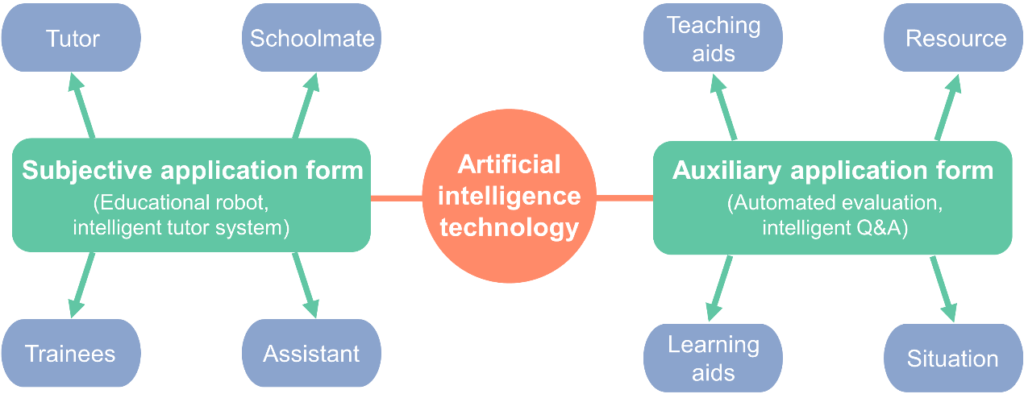
Figure 1. Application form of artificial intelligence in art and design teaching practice.
(2) The connotation of art and design teaching practice
There are mainly four different understandings of the connotation of art and design teaching practice. One understanding is that art and design teaching practice is the process of systematically planning or preparing art and design teaching, represented by Gagne, Kemp, Regan, Umena, and Heke Resist. The second understanding is represented by Merrill, who believes that art and design teaching practice is a secondary development technique for the learning experience and objective environment in previous art and design. The third understanding regards art and design teaching practice as an art and design science of teaching practice, the most representative of which is Paton’s What is Teaching Practice. Some other scholars understand art and design teaching practice as a performance optimization technique. In general, the most essential and necessary aspect of art and design teaching practice is the continuity of teaching practice, that is, teaching practice is a continuous “action” or “process” rather than just an outcome or effect.
This study adopts the definition of art and design teaching practice by He Ke-kou, which has a high recognition in China. Art and design teaching practice is the application of a systematic approach to convert the principles of learning and teaching theories into specific plans for teaching objectives, teaching contents, teaching methods, teaching strategies and teaching evaluation in art and design, creating a systematic “process” or “procedure” for teaching and learning. “. Art design teaching practice is different from pedagogy. The disciplinary theory that directly guides pedagogy plays an indirect role in art design teaching practice, while technical rationality plays a direct role. In addition, it is aimed at art and design activities in the teaching process, rather than mainly studying the nature of teaching and learning and the laws of teaching.
The impact on art and design teaching practice in the context of artificial intelligence
To explore the impact of art and design teaching practice in the context of artificial intelligence, the efficacy of technology on teaching practice is largely achieved by transforming it into teaching resources, tools, media or environments. Based on the seven elements of instructional design, including students, teachers, purposes, curriculum, methods, environment and feedback, this study analyzes the impact of artificial intelligence on art and design teaching practice in the context of the impact and typical applications of artificial intelligence, mainly from two aspects: teaching subjects and objects (students and teachers) and teaching media. The influence of artificial intelligence acts indirectly on teaching objectives and directly on the other five elements, as shown in Figure 2.

Figure 2. Impact of artificial intelligence on art and design teaching practice system.
Impact on teaching subjects and objects
The development of the teaching subject has gone through the teacher-only subject, student-only subject, double subject theory, dominant subject theory, three-body theory, subject-object transformation theory, and composite subject-object theory, as shown in Table 1. But no matter which theory, the core elements in the teaching system are still teachers and students. The advent of artificial intelligence not only changes the participation of traditional teaching subjects and objects and the ownership of information resources, but also replaces teachers and students with some application forms to a certain extent and plays a key role in the teaching system, so that the traditional teachers and students as the core teaching subjects and objects turn to the teaching subjects and objects with artificial intelligence, teachers and students as the core.
Table 1. Categories of teaching subjects.
| Type | Content |
| The only subject of the teacher | Teacher is the subject, students, teaching content, etc. are the objects |
| Students only subject | Students are the subject of the teaching process |
| Dual-body theory | Both teachers and students are the subjects in the teaching process |
| Dominant subject says | Teacher is the leader; students are the main body |
| Trinitarianism | It is emphasized that the teaching process should not only consider teachers and students, but also other factors. The triadic theory focuses on the interaction between the teacher, the student, and the environment. |
| Host-guest transformation says | There is a subject-object relationship in teaching, and this relationship is not set in stone, but can be interchanged. |
| Compound subject-object theory | The subject and object in teaching are intertwined and composite in nature. |
The impact of AI on the teaching subject-object is in the form of the role assumed by the applied form of AI subjectivity in the teaching system. The following is the structure between the subject-object of teaching and learning in the context of AI.
Scenario 1: The role of artificial intelligence for teachers
The first analysis of AI as a teacher’s assistant, the teaching subject structure diagram is shown in Figure 3. The teacher uses the AI assistant, and it can take the initiative to assign teaching contents according to the personalization of teaching subjects. Learners get the learning content adapted to their cognitive ability through the AI assistant. As students learn, the AI assistant provides feedback to the teacher on the problems of each student and the learning situation of the whole class. For the learning content at the next cognitive level, the AI assistant can also take on the task activities of decision support, answering questions and solving problems, and correcting assignments, thus allowing teachers to devote more energy to designing innovative teaching activities, focusing on students’ development, and cultivating students’ learning abilities at higher cognitive levels. In the process of developing higher-order competencies, direct interactive behaviors occur between teachers and students.
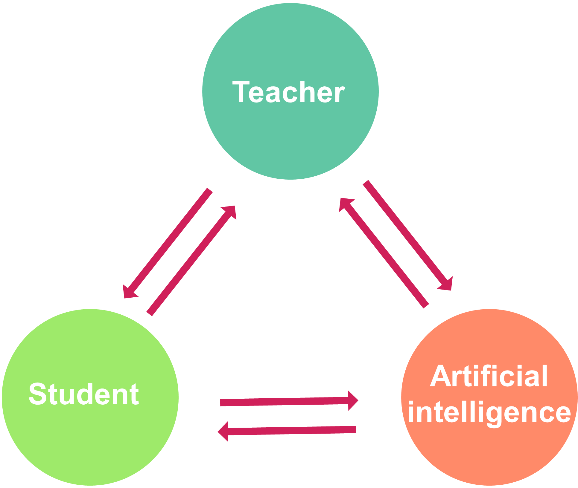
Figure 3. Structure diagram of teaching subject and object.
In addition, when AI acts as a teacher’s learning companion, it can help teachers achieve peer-to-peer teaching problem identification and mutual improvement so that teachers can understand their problems in teaching and research; as a teacher’s trainee, AI robots can also play the role of students. The structure diagram of the teaching host and guest is shown in Figure 4.
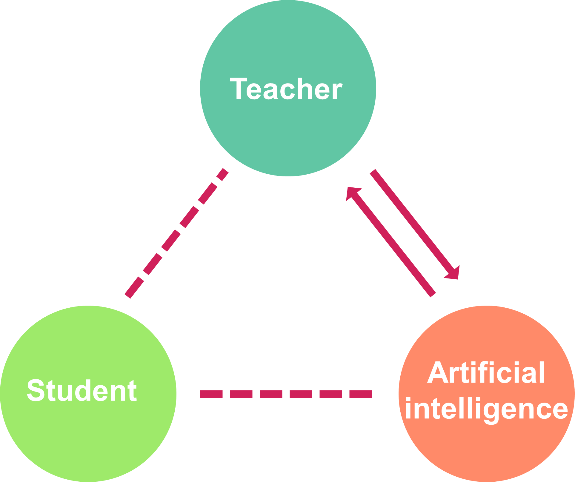
Figure 4. Structure of teaching subject and object.
Scenario 2: Artificial intelligence for students
For students, AI can act as an intelligent tutor to track, record and analyze learners’ learning process in real time, so as to understand each student’s learning characteristics, push personalized learning resources for each learner and make a learning plan in line with their own development; in addition, AI can also act as an assistant for students’ learning, helping them plan their learning tasks and time effectively, and promote students’ learning through the friendly cooperation to promote students’ learning. The structure diagram of the teaching body is shown in Figure 5.
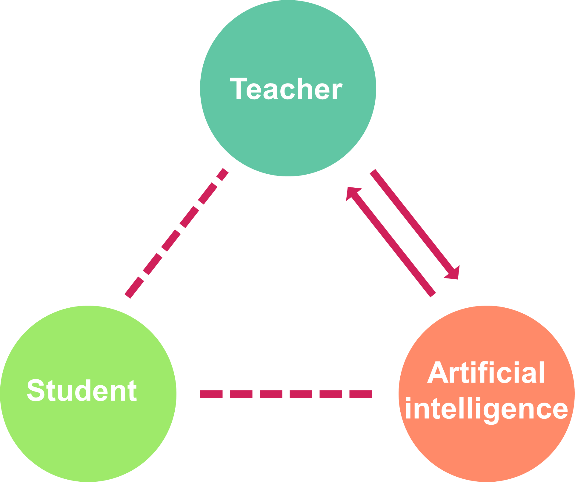
Figure 5. Structure of teaching subject and object.
Impact on teaching media
The teaching process is a process of collecting, processing, handling and using information, and the media used in this process are called teaching media. Instructional media carry not only the most basic educational information but also the most basic teaching resources, and as one of the components of the teaching practice system, they symbolize the degree of development of educational modernization. The creation of textbooks, the use of visual aids, the emergence of audiovisual materials, and the invention of multimedia computers and integer trees are four important leaps in instructional media, all of which are significantly related to the development of technology. And human intelligence, as a revolutionary technology, is bound to influence the instructional media.
Information technology in a broad sense includes coding technologies such as language and writing (including digital) as well as printing technology, media technology (film, recording, radio, television, etc.), computer network technology (conventional digital information processing and transmission technology), and artificial intelligence technology (knowledge processing technology). The development of various technologies has also had an impact on teaching media, making the variety of teaching media increasingly rich, as shown in Table 2.
Table 2. Impact of technology on instructional media.
| Technology | Teaching Media | Teaching Form |
| Printing Technology | Textbooks, blackboards, chalk | Traditional Teaching |
| Media Technology | Slides, TV, film, video, radio | E-learning |
| Computer Communication Technology | Computer, Internet, mobile terminal, virtual reality, augmented reality | Digital Teaching |
| Artificial Intelligence Technology | Intelligent teaching system, educational robot | Intelligent Teaching |
Nowadays, neither printing technology nor media technology has changed the subject position of human beings in knowledge practices, and computer communication technology has only achieved shallow automation of knowledge practices. Future artificial intelligence technologies are likely to replace the subject position of individual human beings in knowledge practices, prompt deep automation of certain knowledge practices, reduce the burden of teachers, and, at the same time, effectively control the learning process of individualized students with respect to their learning situations.
Migration of art and design teaching practice paradigm
This study proposes using Thomas Kuhn’s four components of paradigm, symbolic generalization, beliefs committed by community members, values, and paradigms, as an analytical tool for determining paradigm shift, as shown in Figure 6, to provide a basis for determining whether paradigm shift has occurred in art and design teaching practice. It should also be noted that although the descriptive scientific theory does not include the theory of teaching practice, the theory of teaching practice itself has the characteristics of science, so it is also an effective means to examine whether the migration of the paradigm of instructional design is logically justified by Kuhn’s “paradigm migration theory” which is proposed for the content of scientific theory.
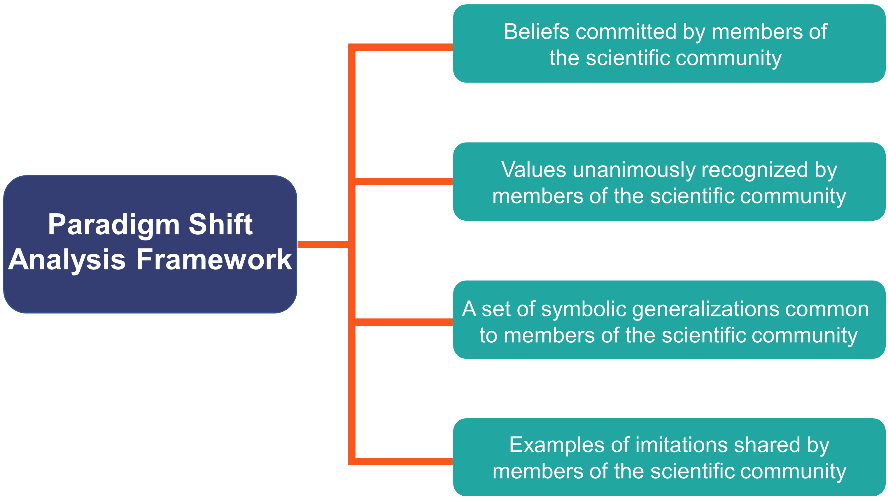
Figure 6. Paradigm shift analysis framework.
Migration of art and design teaching practice paradigm in the context of artificial intelligence
This paper summarizes the key features of the four elements of paradigm composition to analyze the paradigm migration of art and design teaching practice in the context of artificial intelligence.
Beliefs to which community members have committed
As can be seen from the previous section, AI technology has a profound impact on all elements of the instructional system, integrating and transcending the previous role of technology in the design of instructional systems to assume the roles of instructional media and instructional tools. Therefore, the belief of the new art design teaching practice paradigm integrates the characteristics of the media view of multimedia teaching practice and the tool view of information technology teaching design, which is called the ecological view in this study. The essence of the ecological view in this paper is to extend the theory of system ecology to art teaching practice and educational artificial intelligence collage, hoping that artificial intelligence technology has an all-round influence on the teaching practice system in the form of subjective and auxiliary applications, forming an ecological environment conducive to the integration of artificial intelligence technology for teachers to implement efficient teaching methods and learners to obtain personalized learning services and good development experiences, so as to realize technology This will enable the deep integration of technology and education, and achieve the purpose of cultivating the talents required by the times.
Values agreed upon by the members of the community
The core value shared by the members of the community of multimedia teaching practice paradigm is to maximize the effectiveness of teaching and learning by using art and design teaching practice as a delivery technique to transfer objective knowledge and skills to learners with maximum effectiveness. The value of information-based instructional design is to put the learner at the center, encourage active participation, and optimize the teaching and learning process. Specifically in the context of artificial intelligence, the greatest advantage of art and design teaching practice lies in making full use of the advantages of big data, cloud computing, artificial intelligence and other intelligent technologies to build an ecological teaching system that integrates technology, thus improving the personalization and precision of education and teaching.
A set of “symbolic generalizations” shared by the members of the community
The paradigm shift in art and design teaching practice in the context of artificial intelligence will have implications for the theoretical foundations of teaching practice. This study combines an examination of the meaning of paradigms and two major learning theories, connectionism and neo-constructivism, in an attempt to abstract symbolic generalizations shared by members of a community in the context of artificial intelligence. Neo-constructivism suggests that learners need to learn to choose and filter knowledge information based on their personal needs or personal interests. Strong connections and meaningful constructions are established for that soft knowledge that is closely linked to personal needs or interests. Learners acquire knowledge based to some extent on subjective judgments, i.e., connected learning of knowledge that is useful to them. At the same time, learners still need to continuously engage in the construction and refinement of knowledge in the context of artificial intelligence. By fusing the connotations of the two theoretical foundations, the symbolic generalization of the new art and design teaching practice paradigm is transformed from the previous static and stable representation to a dynamic, multipoint-to-multipoint networked nonlinear form.
Examples common to community members that can be imitated
Paradigm-wise, many scholars have discussed the art design teaching practice model under this paradigm, for example, the Robotics Center of Zhengqing Institute of Green Intelligent Technology, Chinese Academy of Sciences, developed the humanoid service robot being developed as an art design teaching robot to initially build a constructivist-based robot-assisted teaching model and proved the effectiveness of this teaching design model. NETP20l0 proposes a technology-based Connected Teaching Model (CTM), which aims to reconstruct an effective teaching model, hoping that with the power of technology, anyone, anytime, anywhere, can connect learners, educators, learning tools, learning resources, and learning environments to obtain the most effective, simple, and powerful learning support and services. And artificial intelligence technology is the technological foundation for this purpose.The above analysis shows that the four components of the paradigm of art design teaching practice in the context of artificial intelligence are already significantly different from the paradigm of multimedia art design teaching practice and the paradigm of information art design teaching practice in the intelligent stage, as shown in Table 3. Therefore, this study believes that artificial intelligence has produced paradigm migration for art design teaching practice. However, the paradigm migration does not mean replacement, nor does it mean that the previous art design teaching practice paradigm has no advantage. Each art and design teaching practice paradigm has different emphasis in terms of value, and it is enough to choose the most suitable one for the development of education and teaching according to teaching needs, teaching resources and students’ characteristics.
Table 3. Migration model of art and design teaching practice paradigm.
| Mode | Technical Features | Paradigm | |||
| Beliefs | Value | Symbols | Paradigm | ||
| Multimedia teaching practice | Appear in teaching media | Media ViewUse of technology | Maximize the efficiency of knowledge transfer | Stable linearity | Multimedia portfolio design |
| Information-based teaching practice | Not only in the teaching media, but also to some extent in the teaching methods and pedagogy | Tool ViewUtilization of technology | Encourage learners to actively participate in knowledge construction | Stable nonlinearity | Blended learning, flipped classroom |
| Intelligent Teaching Practice | The productivity form of technology acts on the subject and object of teaching practice, trying to achieve the full penetration and integration of teaching objectives, teaching content, teaching environment and other system elements with information technology. | Ecological viewHuman-machine integration | Improve personalization and precision of education and teaching | Dynamic nonlinearity | Technology-based Connected Teaching Model, Constructivist-based Robotics Assisted Teaching Model |
Typical cases of intelligent art design teaching practice
In this section, we explore the implications of the typical application of the “paradigm” of intelligent art and design teaching practice. Since the influence of AI on teaching objectives, teaching media and teaching contents is often integrated with other teaching practice elements, the exemplary application scenarios are not obvious. Therefore, we mainly explore the typical cases of the influence of AI technology on the subject and object elements of art and design teaching practice under the guidance of intelligent teaching practice paradigm, as shown in Table 4.
Table 4. Typical cases guided by the intelligent instructional design paradigm.
| Artificial intelligence application form | Elements of teaching practice | Typical cases | Features |
| Subjective application forms | Mentor(Teaching subject-object change) | Arizona State University’s Art and Design and Knewton Adaptive Learning System | Personalized teaching and individualized instruction |
| Trainees(Teaching subject-object change) | Betty’s Brain, created by Vanderbilt University’s Teacher Agents Group | ||
| Nao developed by Aldebaran Robotics | |||
| Learning Companion(Teaching subject-object change) | Austin Peay State University’s Degree Compass personalized art and design program recommendation system | ||
| Assistants(Teaching subject-object change) | Artistic Alex AI chatbot teaching assistant at Technical University of Berlin | Personalized services to improve the efficiency of education and teaching | |
| Robotics Assistant Professor in Art and Design at Georgia Tech | |||
| Open Science Lab at the Open University in the UK |
The above briefly discusses the case of AI art and design teaching practice from the subjectivity application form, followed by an in-depth analysis of the case of Arizona State University’s active learning and Knewton adaptive learning system.
Since 2011, Arizona State University faculty have used a model of teaching practice based on B1oom classification to subvert the traditional lecture-dependent learning approach and introduce an intelligent teaching application that combines adaptive technology with art and design, as shown in Figure 7. At the bottom of the pyramid, the machine is the main body, mainly using artificial intelligence technology and adaptive technology to help students complete some art and design challenges. In the upper part of the pyramid, the teacher is the main body, mainly carrying out learning communication with students on higher-order abilities.
In this teaching process, technology in its productivity form has an impact on the subject and object of teaching design elements, and the teaching subject and object are changed from teachers and students to teachers, students and artificial intelligence, and through the interaction form of human-computer integration, teachers have ample energy to implement efficient teaching methods and learners can get personalized learning services. By building an ecological environment of human-computer integration, the personalization and precision of education and teaching are enhanced, and the deep integration of technology and education is gradually realized.
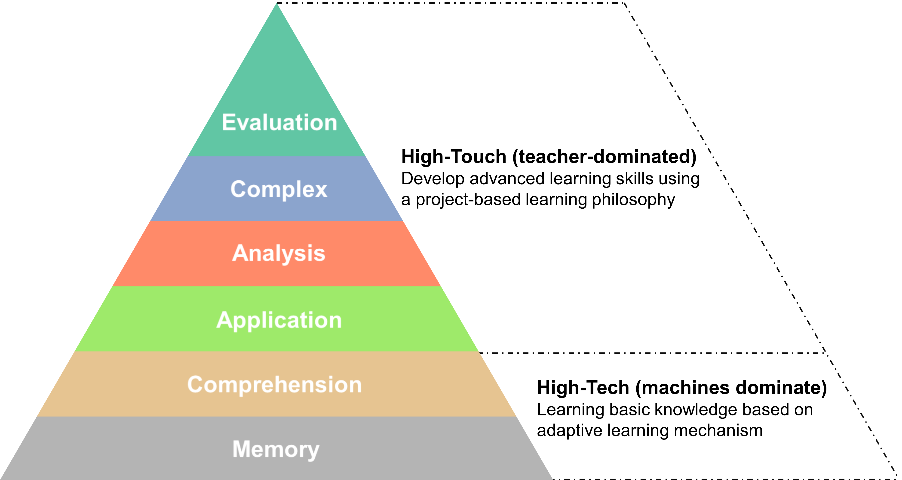
Figure 7. Hierarchy of smart education applications at Arizona State University.
More than 65,000 students at Arizona State University all use the adaptive learning system, and 12 courses use the adaptive system to some extent. In the university’s Introduction to Art and Design class specifically, instruction used to take place in a lecture format, with dropout rates hovering around 10% and about 77% of students achieving a C or better. Now, however, through adaptive technology and the synergy of faculty in teaching activities, student motivation has generally increased, with the drop rate dropping to 5% in spring 2016 and 91% of students scoring a grade of C or better.
Through the above case study, the large-scale application of AI technology in the field of art and design teaching practice has brought new life to traditional school teaching practice. In the future, schools will shift from large-scale teaching models to more innovative and student-centered personalized teaching. With the support of AI technology, we can realize the educational ideal of personalized education and teaching according to students’ abilities that we have been pursuing.
Conclusion
(1) This paper discusses the meaning of artificial intelligence and its subjective and auxiliary application forms in art and design teaching practice. Next, the basic meaning of art and design teaching practice and the elements of teaching practice are stated. On the basis of these two parts, the impact of AI on teaching subject and object and teaching media is analyzed. Among them, the impact of AI on the teaching subject and object is the role played in the teaching system by the role assumed by the subjectivity application form of AI. In addition, AI may replace the subjectivity of individual human beings in knowledge practices and contribute to the deep automation of certain knowledge practices.
(2) This paper adopts Thomas Kuhn’s four components of paradigm, symbolic generalization, beliefs committed by community members, values and paradigms, as an analytical tool to determine whether paradigm shift has occurred in art and design teaching practice. The paradigm of art and design teaching practice has different emphasis in terms of values, and it is necessary to choose the most suitable model for the development of education and teaching based on teaching needs, teaching resources and students’ characteristics.
(3) Through the typical case of intelligent art and design teaching practice, it can be seen that the large-scale application of artificial intelligence technology in the field of art and design teaching practice can bring new vitality to traditional school teaching practice. Realize the education concept of personalized education and teaching according to the material.
Acknowledgements
This work was not supported by any funds. The authors would like to show sincere thanks to those techniques who have contributed to this research.
References
[1] Gou, F., Liu, J., Xiao, C., Wu, J. (2024) Research on artificial-intelligence-assisted medicine: a survey on medical artificial intelligence. Diagnostics, 14(14), 1472.
[2] Yu, W. (2021) Artificial intelligence for the development of university education management. Frontiers in Educational Research, 4(1).
[3] García-González, E., Jiménez-Fontana, R., Azcárate, P. (2020) Education for sustainability and the sustainable development goals: Pre-service teachers’ perceptions and knowledge. Sustainability, 12(18), 7741.
[4] Zhang, L., Zhao, S., Yang, W., Yang, Z., Wu, Z. A., Zheng, H., Lei, M. (2024) Utilizing machine learning techniques to identify severe sleep disturbances in Chinese adolescents: an analysis of lifestyle, physical activity, and psychological factors. Frontiers in Psychiatry, 15, 1447281.
[5] Knox, J. (2020) Artificial intelligence and education in China. Learning, Media and Technology, 45(3), 298-311.
[6] Liu, Q., Zhang, W., Zhao, J. J., Syn, N. L., Cipriani, F., Alzoubi, M., … Goh, B. K. (2023) Propensity-score matched and coarsened-exact matched analysis comparing robotic and laparoscopic major hepatectomies: an international multicenter study of 4822 cases. Annals of Surgery, 278(6), 969-975.
[7] Anderson, A. H. (1991) Pentecostal pneumatology and African power concepts continuity or change? Missionalia: Southern African Journal of Mission Studies, 19(1), 65-74.[8] Wang, Q., Su, M., Zhang, M., Li, R. (2021) Integrating digital technologies and public health to fight Covid-19 pandemic: key technologies, applications, challenges and outlook of digital healthcare. International Journal of Environmental Research and Public Health, 18(11), 6053.
[9] Rana, J., Gaur, L., Singh, G., Awan, U., Rasheed, M. I. (2022) Reinforcing customer journey through artificial intelligence: a review and research agenda. International Journal of Emerging Markets, 17(7), 1738-1758.
[10] Chen, X., Zou, D., Xie, H., Cheng, G., Liu, C. (2022) Two decades of artificial intelligence in education. Educational Technology & Society, 25(1), 28-47.
Share and Cite
Yuan, H. (2024) Artificial Intelligence-Based Teaching Practice of College Art and Design. Global Education Bulletin, 1(1), 44–57. https://doi.org/10.71052/geb2025/orto3941